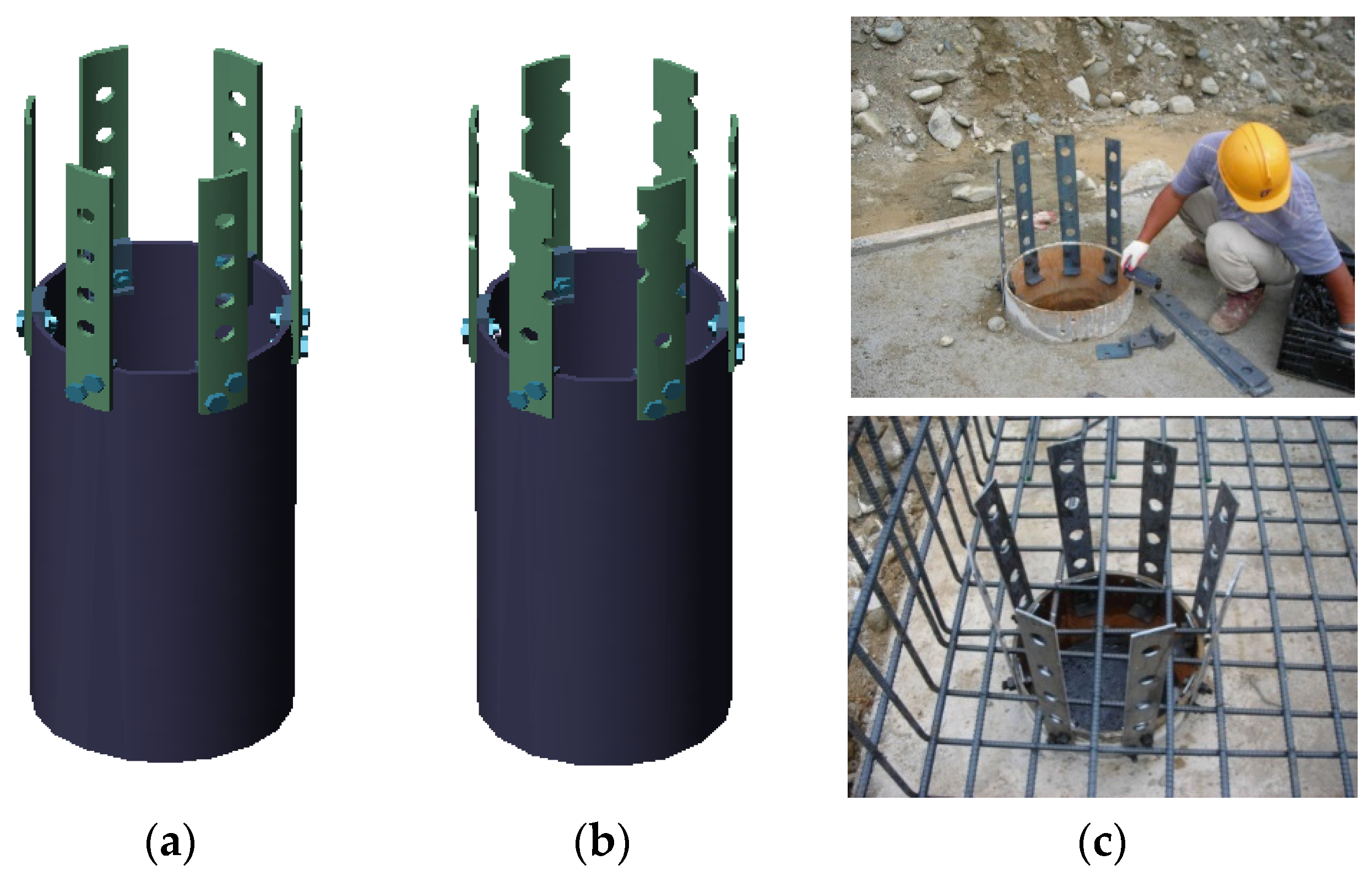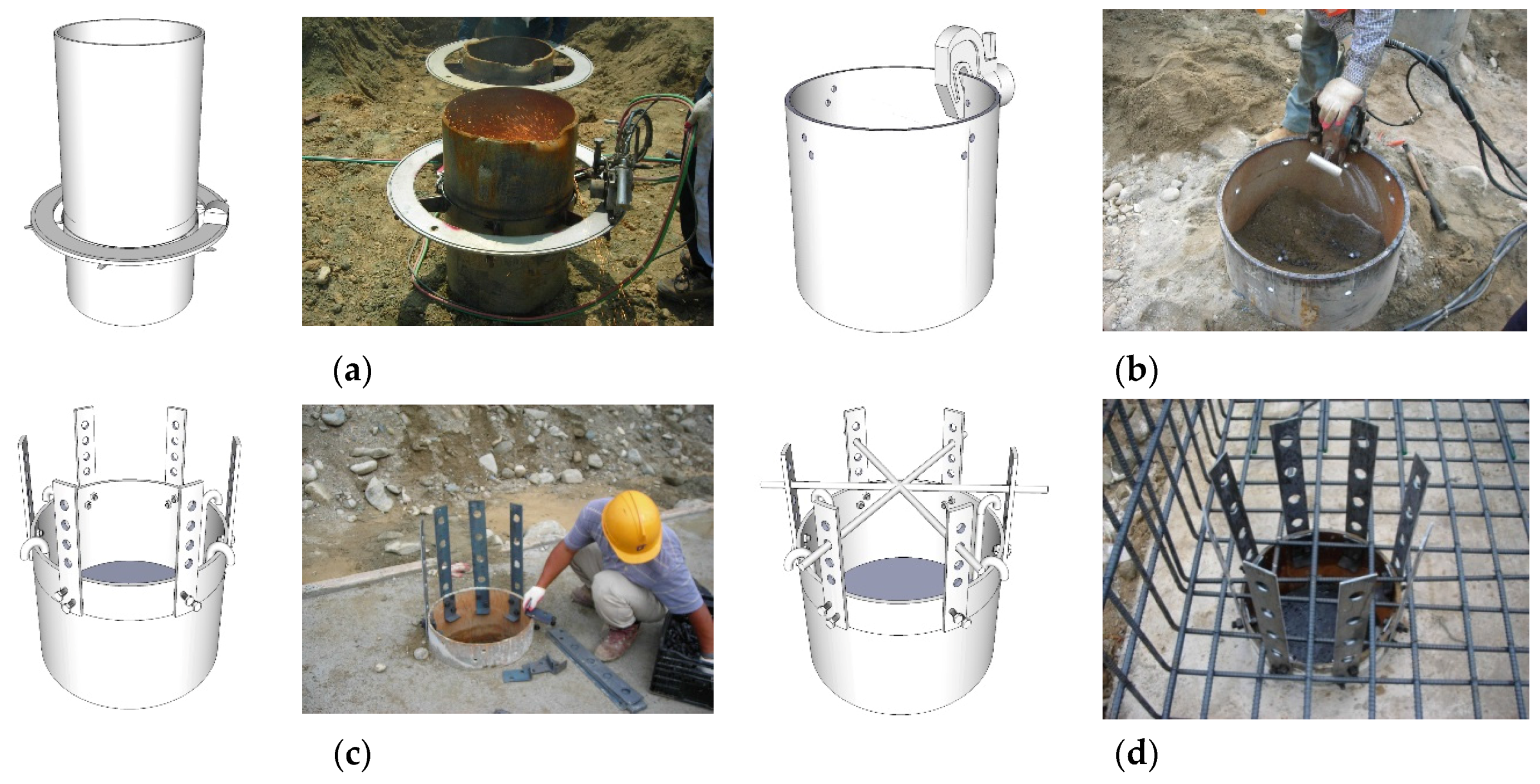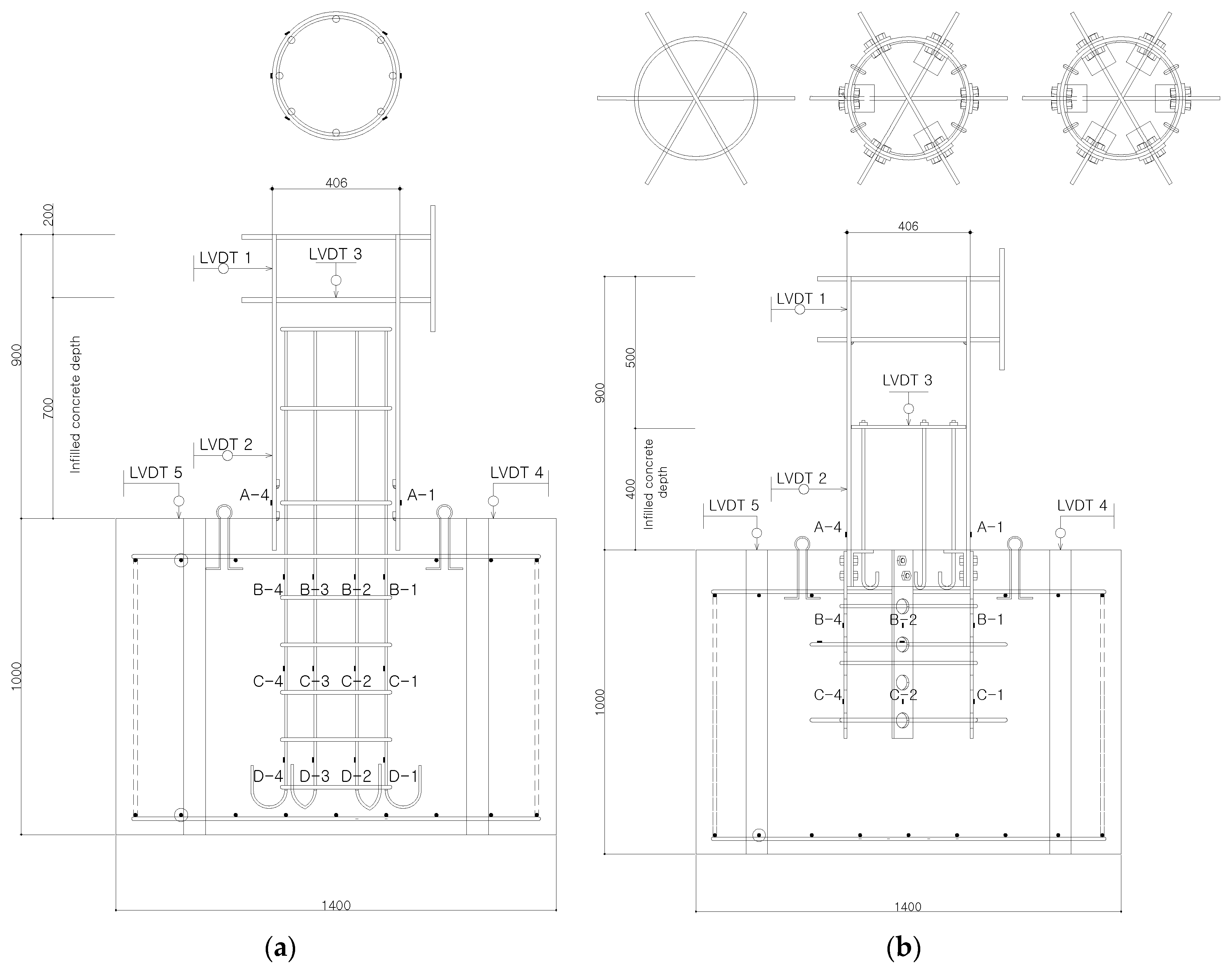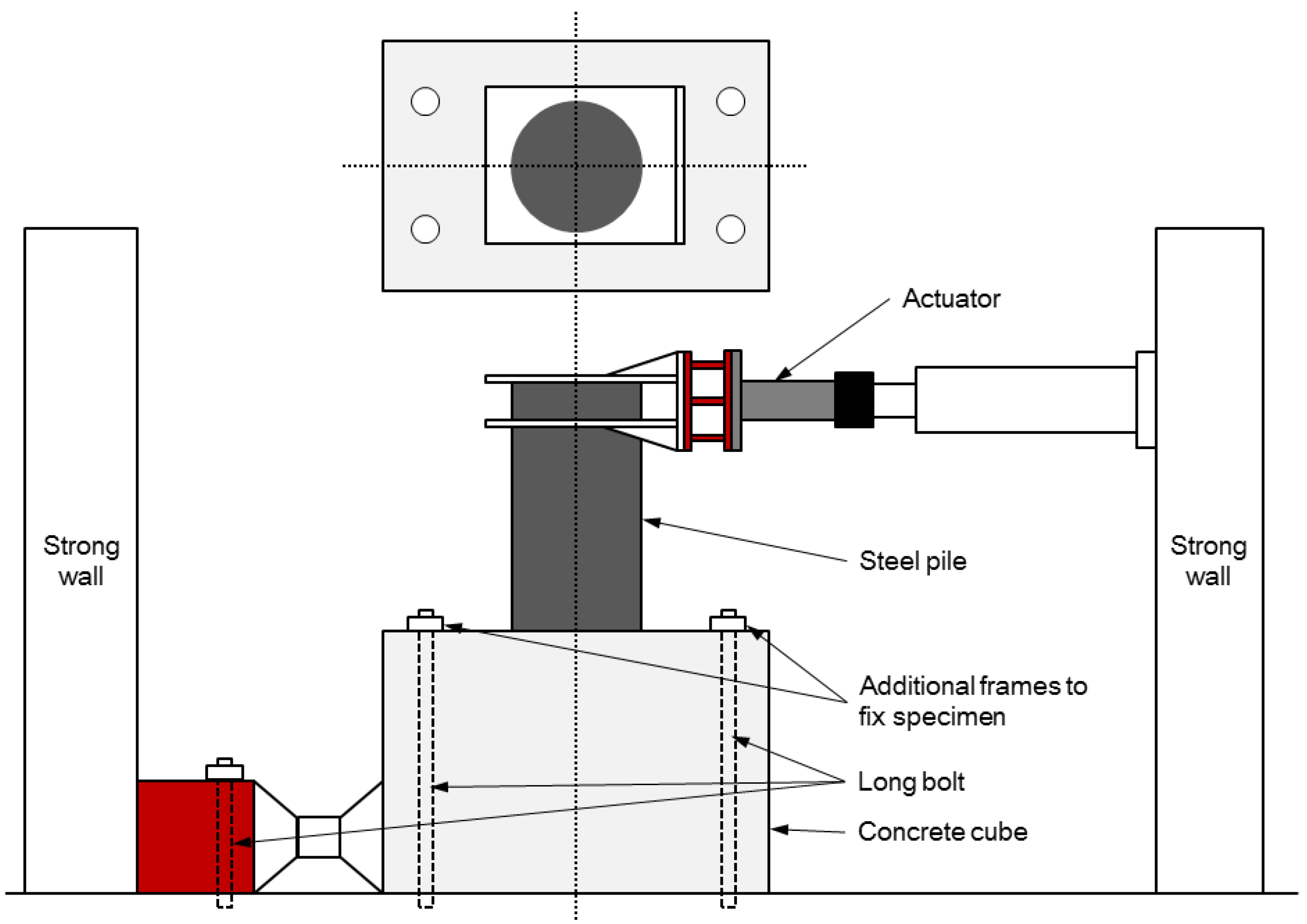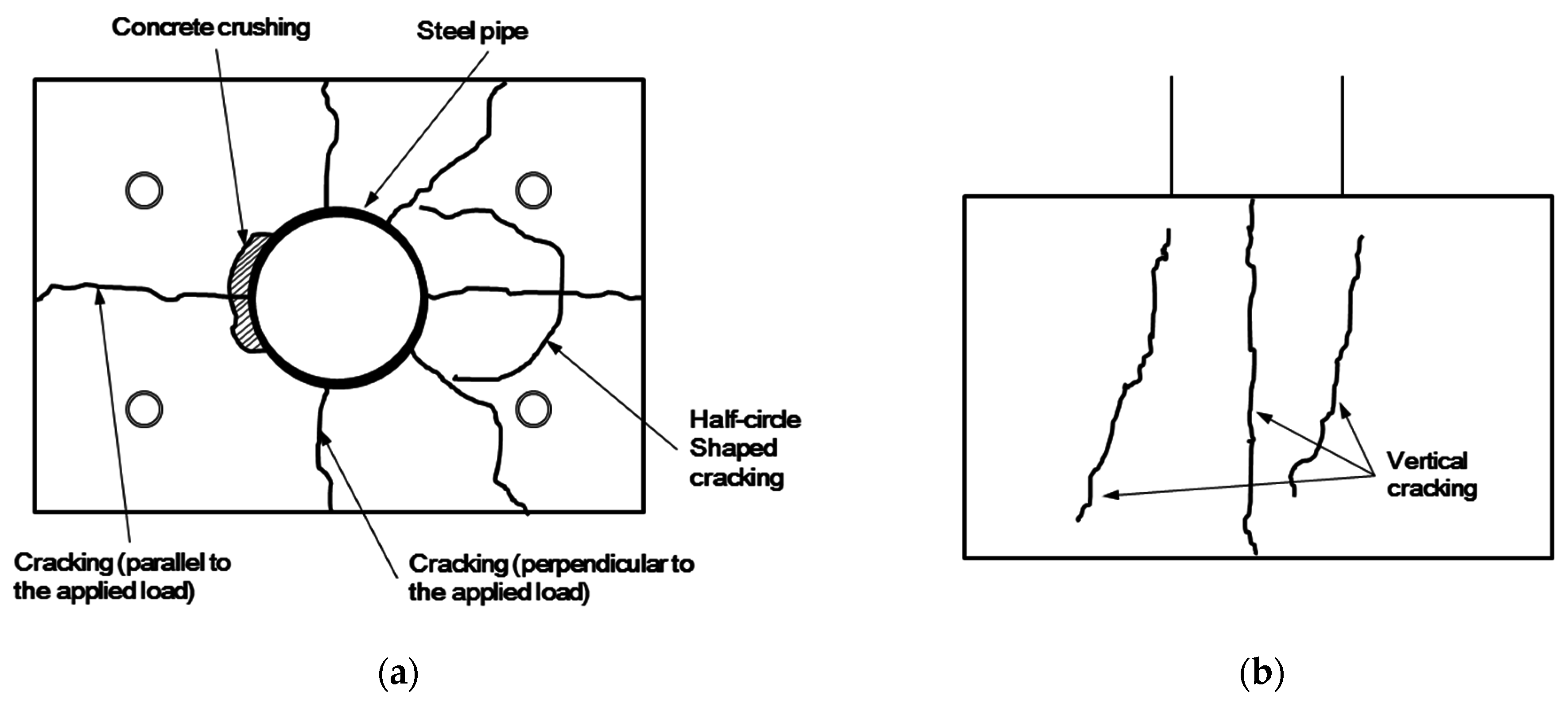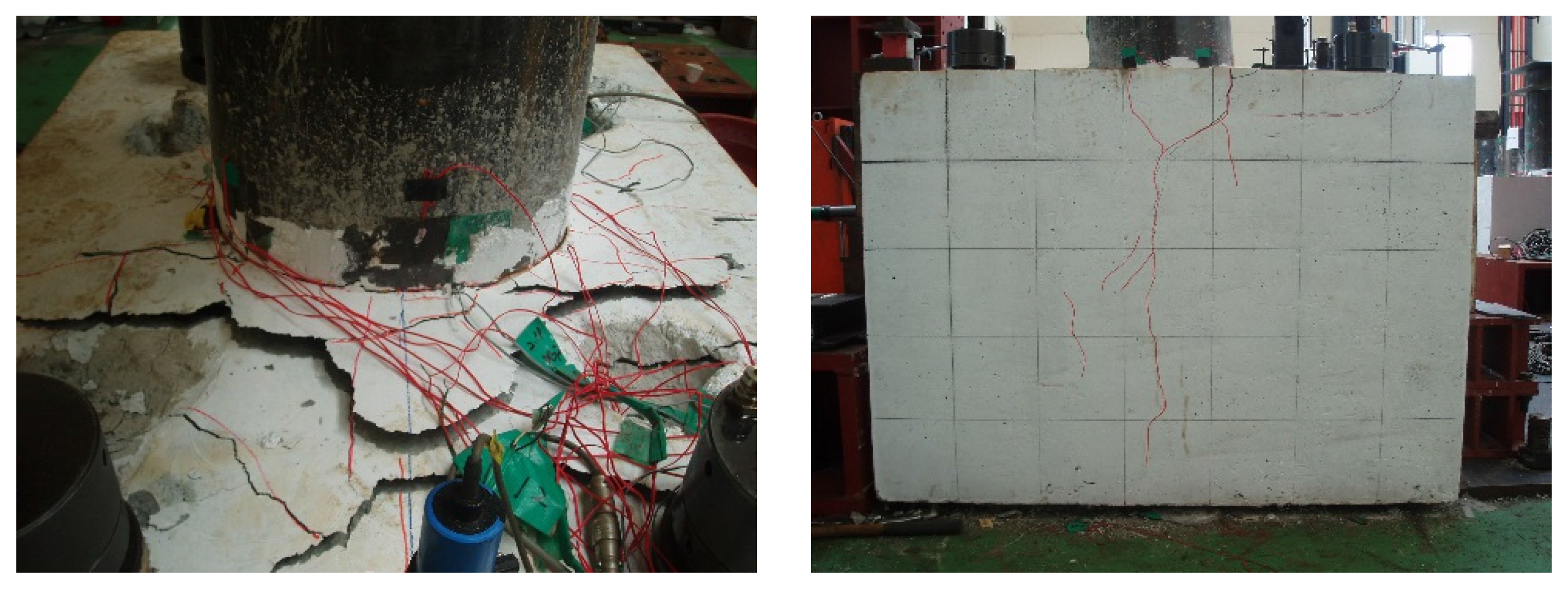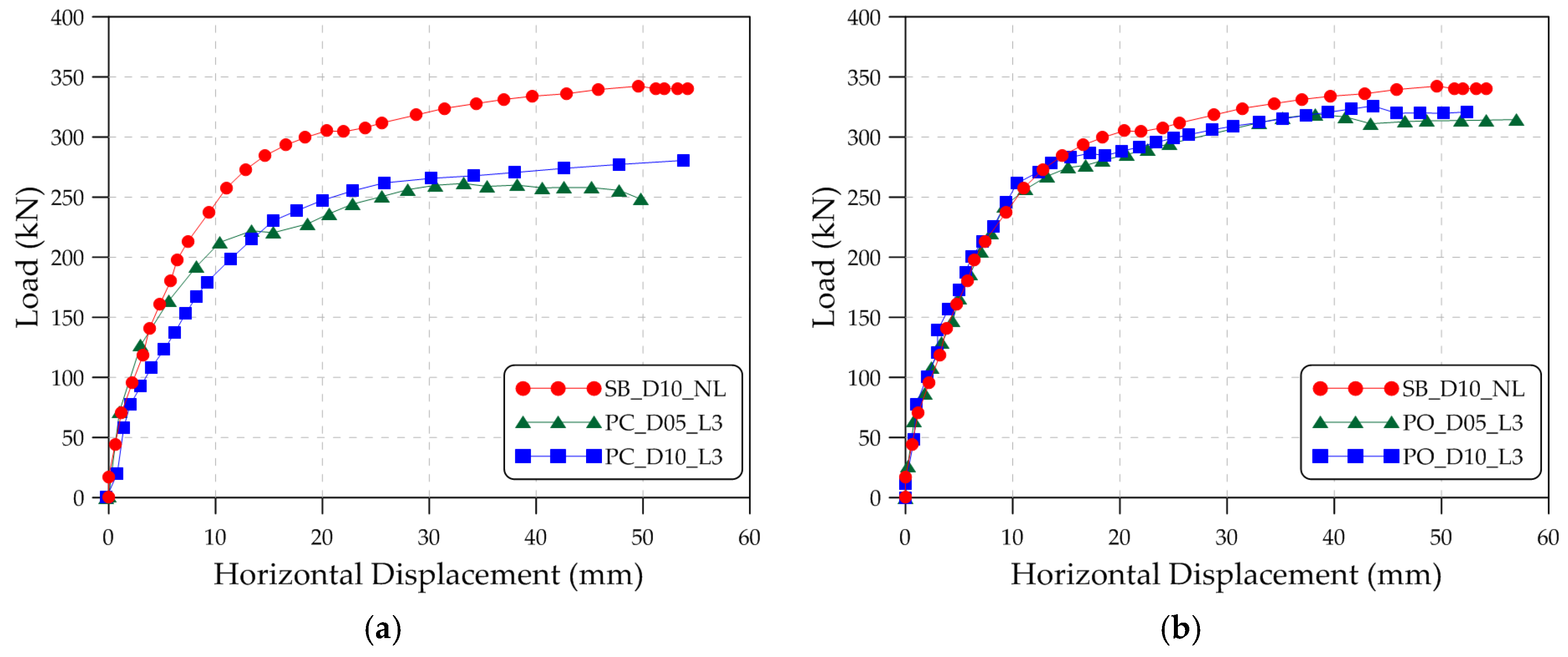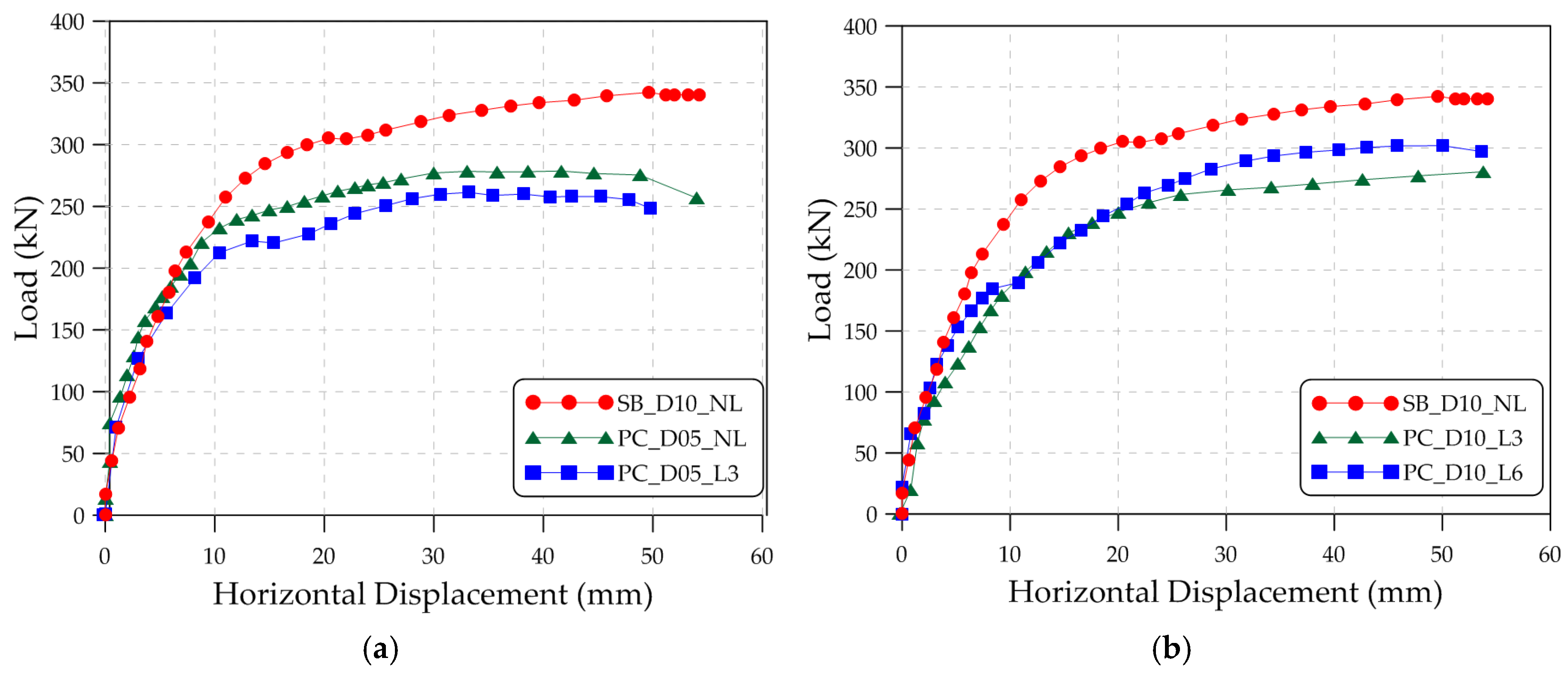3.1. Failure Modes
Table 3 summarizes the test results such as peak loads, displacements at peak loads, and loads corresponding to several crack propagation phenomena occurring in the concrete block. All of the test specimens basically showed very similar crack propagation patterns, which are illustrated in
Figure 6. Cracking first occurred on top of the concrete block in the direction perpendicular to the lateral load (Stage 1) and then propagated into its side surfaces (Stage 2). As the load further increased, cracks were developed in the direction parallel to the lateral load appearing on top of the concrete block (Stage 3), and concrete crushing occurred on its compression side (Stage 4). In all of the test specimens, where the proposed perfobond shear connectors were installed, the crack pattern of a half circle shape was observed on top of the concrete block, as shown in
Figure 6a. This phenomenon was not observed in the reference specimen SB_D10_NL, where the steel pile was strengthened with conventional steel rebars.
Figure 7 shows the cracking pattern of the reference specimen SB_D10_NL on its top and vertical faces. Cracks started to develop on the top and side surfaces of the concrete block in the direction perpendicular to the applied load at the load level (
P) of 99 kN. As the load further increased, additional cracks were propagated on the top surface in the direction parallel to the applied load at
P = 192 kN. Finally, concrete crushing occurred in the compression zone of the top surface at
P = 277 kN, and the developed cracks were further propagated until the test specimen reached its complete failure stage.
Figure 8 shows the cracking pattern of Specimen PO_D10_L6 on its top and side faces. This type of crack patterns was observed in all of the test specimens, where the proposed perfobond shear connectors were installed, although their peak load values were slightly different from each other. On the top surface of the concrete block, cracks started to develop in the direction perpendicular to the applied load at
P = 69 kN and then were propagated into the side surface of the concrete cube at
P = 78 kN. Top surface cracks were developed in the parallel direction to the applied load at
P = 187 kN. Concrete crushing happened on top of the concrete cube at
P = 235 kN. The test was over at
P = 303 kN, when half-circle shaped cracks were intensively formed on the tension side of the top surface as shown in the figure.
3.2. Effects of Test Parameters on the Bending Resistance Capacity of the Strengthened Steel Pile Cap
This section discusses the effects of test parameters such as the type of perfobond shear connectors, infilled concrete depths, and the number of L-shaped steel plates on the bending resistance capacity of the steel pile cap strengthened with the proposed perfobond connectors.
Figure 9a,b show the load-displacement curves of the D05_L3 and D10_L3 specimens to investigate the effect of perfobond shear connector types on their peak strengths, respectively. Here, D05_L3 specimens refer to the specimens with concrete infilled depth equal to the half of steel cap diameter (D05) and three L-shaped plates (L3). Hereafter, this notation is used throughout the section for convenience. The load-displacement curve of the reference specimen SB_D10_NL is also plotted in the two figures for comparison. The peak strengths and peak strength ratios of D05_L3 and D10_L3 specimens are listed in
Table 4 and
Table 5, respectively.
From these results, it can be seen that the specimens strengthened with the open-hole type perfobond connectors have higher bending resistance than those with the closed-hole type connectors, and almost equal strength to that of the reference specimen. For example, the ratios of the peak strength of the open-hole type perfobond specimens PO_D05_L3 and PO_D10_L3 to that of the reference specimen are 93.3% and 95.3%, respectively. This is remarkable considering that the concrete infilled depths of these specimens are only in the range of 200 mm and 400 mm, while that of the reference specimen is 700 mm as indicated in
Table 1. Furthermore, as can be seen from
Figure 9, their initial stiffness is almost equal to that of the reference specimen, and they retain the level of ductility comparable to that of the reference specimen. In addition,
Table 4 and
Table 5 show that their peak strengths are approximately 15% to 20% greater than those of the closed-hole type perfobond specimens. This seems to happen since the open-hole type perfobond connectors have a cross-sectional area larger than the open-hole type connectors as illustrated in
Figure 3.
In order to examine the effect of concrete infilled depths on the bending resistance capacity of the specimens, the load-displacement curves of PC_L3 and PO_L3 specimens are plotted in
Figure 10a,b, respectively. The load-displacement curve of the reference specimen is also included in the plot.
Table 6 and
Table 7 provide the peak strengths and peak strength ratios of these specimens.
It can be noted from these results that the peak strength of the specimen is increased with increasing concrete infilled depth. For example, in the case of PC_D10_L3 specimen, its peak strength is increased by 9.2% due to the increase of concrete infilled depth from 200 to 400 mm, while that of PO_D10_L3 specimen only by 2.2%. Therefore, the increase of peak strength due to increasing concrete infilled depth is more pronounced with closed-hole type perfobond specimens. As already observed previously, the open-hole type perfobond specimens have an approximately 10%–20% higher peak strength than those with closed-hole type perfobond connectors, and almost the same initial stiffness as the reference specimen.
Figure 11a,b show the load-displacement curves of PC_D05 and PC_D10 specimens, respectively, and the effects of the number of L-shaped plates on the bending resistance capacity of the specimens are investigated. The load-displacement of the reference specimen is also included in both figures.
Table 8 and
Table 9 list the peak strengths and peak strength ratios of these specimens.
It can be seen from
Figure 11a and
Table 8 that the specimen with three L-shaped plates (PC_D05_L3) has a slightly smaller peak strength than the one with no L-shaped plates (PC_D05_NL). In contrast,
Figure 11b and
Table 9 indicate that the specimen with six L-shaped plates (PC_D10_L6) has a slightly higher peak strength than the one with three L-shaped plates (PC_D10_L3). As a consequence, it can be concluded that the number of L-shaped plates does not have a high impact on the bending resistance capacity of the specimen, and it may be impossible to install any of the L-shaped plates with the proposed perfobond shear connectors. Nonetheless, if L-shaped plates are installed, it is suggested that a number of the L-shaped plates should be symmetrically distributed with respect to the direction of lateral load.
